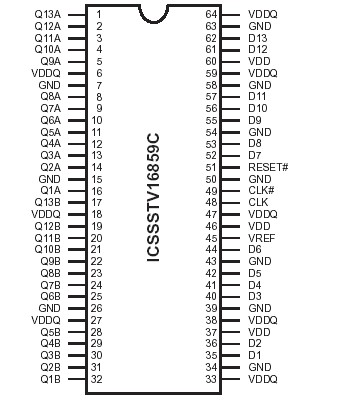ICSSSTV16859C: Features: • Differential clock signals• Meets SSTL_2 signal data• Supports SSTL_2 class II specifications on outputs• Low-voltage operation - VDD = 2.3V to 2.7V• Availa...
floor Price/Ceiling Price
- Part Number:
- ICSSSTV16859C
- Supply Ability:
- 5000
Price Break
- Qty
- 1~5000
- Unit Price
- Negotiable
- Processing time
- 15 Days
SeekIC Buyer Protection PLUS - newly updated for 2013!
- Escrow Protection.
- Guaranteed refunds.
- Secure payments.
- Learn more >>
Month Sales
268 Transactions
Payment Methods
All payment methods are secure and covered by SeekIC Buyer Protection PLUS.

 ICSSSTV16859C Data Sheet
ICSSSTV16859C Data Sheet







